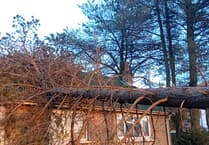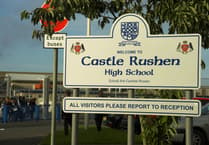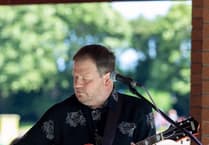The unique history of witchcraft on the Isle of Man will be explored in an upcoming podcast episode by Manx resident Michael Moorcroft.
He says he’ll be exploring both the historical facts and folklore around the island’s relationship with witches, including Hop tu Naa favourite Jinny the Witch, in an episode of his ‘The Mage’s Well’ podcast.
While folklore Professor Ronald Hutton has said that the Isle of Man in the middle ages ‘had the reputation of being the part of the British Isles most steeped in sorcery,’ Michael explains that, despite popular thinking, witches were not always seen as malevolent figures on the Isle of Man.
Some stories even include local witches aiding sailors by ‘selling wind’, Michael said: ‘Witches would go out on a windy day and do chants to tie up the wind within a knot in a piece of sailing rope.
‘Then whenever sailors were in the middle of the sea without wind they start to undo these knots and it would invoke the wind.’
The less hostile relationship with witchcraft in the island can also be seen in the comparatively lighter punishments given to those who were convicted of the practice, which would often result in being burnt at the stake in the UK.
Michael said: ‘On the Isle of Man we don’t have a big tradition of with hunts. There was a woman called Margaret Ine Quane who was burned alive with her son tied to her at the stake and that really shocked the community.
‘After her death a few witches were tried but they were only sentenced to penance, for example standing in Castletown square with a sign about their witchcraft.’
He also addresses one famous story about a local witch who had predicted the death of a group sailors, resulting in her blame for the event, and was subsequently punished by being rolled down Slieau Whallian in St John’s in a nailed barrel.
However, he says: ‘Looking into it there is no historical record of that and they think that’s because it was imported from somewhere else to keep the local witches in check, to intimidate and scare them a bit, but there is no evidence of witches being killed on Slieau Whallian.’
Michael explained that the treatment of witches was also often linked to other cultural beliefs with Manx people tending to blame fairies, or little people, for their problems over witchcraft.
Another historical figure explored by Michael is Nan Wade, who was a famous local healer in the island and lead the podcast host to discover the, Isle of Man specific, process of ‘lifting’ herbs.
Michael said: ‘You would take the herbs whilst uttering a charm and you could only pick three, six, seven or nine pieces from different plants based around the more number, the more potent the effect.
‘Also, what you gathered could only be used for the person you were gathering for, you couldn’t do a big batch as you had to name your patient and ask the plant to heal them, it’s very specific.’
Another focus of Manx witchcraft stories is the association of witches and hares, Michael tells the story of Elizabeth Kewin who was made out as a particularly ‘evil’ figure in Manx folklore and history and was reported as turning into a hare by a local farmer.
He said: ‘It was quite well known in Manx folklore that witches would transform into hares, poachers would be very reluctant to go after them in case they killed an ancestor or an old woman as it was believed witches would turn into hares after they died.’
Not just consigned to history, the Andreas resident says Manx witchcraft still remains today, he said: ‘There are definitely elements that have been preserved because of the unique geographic location of the island, the idea of it being a hard place to work agriculturally.
‘There’s a whole melting pot of circumstances that have allowed for all these accounts to stick.’
The newest series of Michael’s podcast started this week and can be found on all podcast sites by searching ‘The Mage’s Well’, wwith the ‘Witches of the Isle of Man’ episode releasing on November 16.





Comments
This article has no comments yet. Be the first to leave a comment.